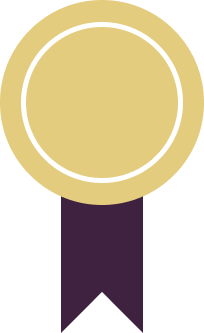Craniosacral Therapy

Relieve tension and promote your body’s natural healing processes.
What is craniosacral therapy?
Craniosacral therapy, also known as CST, is a non-invasive, manual light-touch therapy that helps the body release tension and remove restrictions related to the craniosacral system. By doing so, CST helps promote pain relief and improvement in the body’s natural healing processes. In simpler terms, it’s a form of therapy similar to massage therapy that can be used to help relieve symptoms from a variety of conditions in people of all ages. The earliest use of light-touch therapy dates back to the 19th century. However, it was in the 1970s when CST was officially developed as a result of extensive clinical research by Osteopathic Physician, John E. Upledger at Michigan State University. Today, CST is practiced by physicians, osteopaths, chiropractors, massage therapists, physical therapists, occupational therapists, athletic trainers, acupuncturists, and many other health practitioners around the world. The core belief to craniosacral therapy is that better spinal fluid flow within the central nervous system can help relieve pain and therefore promote better healing. The therapy itself focuses on gently and exteriorly improving the craniosacral system, which is made up of the protective membranes and fluid around the brain and spinal cord.
What does craniosacral therapy help with?
People of any age, from infants to adults, can benefit from craniosacral therapy—even athletes! This is thanks to the gentle touch techniques applied by the CST practitioner. Both chronic conditions and symptoms from singular events like a concussion can be aided by CST. CST can help relieve systems related to the following conditions, and more:
- Chronic migraines
- Neck pain
- Back pain
- Neuralgia
- PTSD
- Stress
- Autism
- Chronic fatigue
- Fibromyalgia
- Post-concussion syndrome
- Traumatic brain injury
- Chronic traumatic encephalopathy (CTE)
- Central nervous system disorders
- Scoliosis
- Orthopedic issues
- TMJ syndrome
- Cancer treatments
- Infant and childhood disorders
What happens in a craniosacral therapy session?
A craniosacral therapy session lasts about 45-60 minutes. The client lays fully clothed on a massage table in a private and quiet environment. The therapist will first use light touch techniques to evaluate or “listen to” the client’s body. They will be searching for any areas of tension in the craniosacral system and sensing ease of motion and rhythm of the movement of cerebrospinal fluid. Then, the therapist conducts soft touch messaging to the identified areas of concern. This light touch is equivalent to about 5 grams of pressure, similar to the weight of a nickel. During a CST session, the fluid flow will be enhanced and membrane tension will be relieved. Clients may feel a variety of different sensations during a session. You may feel deeply relaxed, the sensation of your tissues unwinding their tension, or possibly recalling the memories of the past injury or trauma that may have caused your body stress. The last case is a phenomenon known as SomatoEmotional Release (SER), and while it may not happen to everyone during a CST session, it is quite a normal occurrence. Every session is customized to the client’s health needs and the current state of their body’s tension. Because every person’s needs are unique, the number of CST sessions someone needs will vary. Three to ten sessions is the most common range to see effective results.
How do you feel after craniosacral therapy?
You may experience a variety of after-effects following CST. Some people feel very relaxed after their sessions, while others feel very energetic. Decreases in pain or increases in mobility may be immediate, but they may also gradually improve in the days after a CST session.
Who should not have craniosacral therapy?
While CST can address symptoms related to many conditions, there are some cases in which it would not be a safe therapy to have. These cases may include conditions where even the slightest variations in intracranial pressure could lead to instability (e.g., recent skull fractures, acute aneurysms, cerebral hemorrhages or other severe bleeding disorders). Because of this, it is recommended to talk to your physician before getting CST.
Craniosacral Therapy Practitioner
As a trained CST practitioner, I can help your body in its healing journey with personalized CST sessions. You’ll find the relief you need and feel like yourself again as you heal in body and mind.



